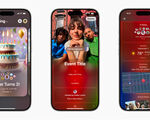Your event website is meant to be a mirror image of your event and a reflection of the look, feel and important aspects. Besides the website being a reflection of your event, it also needs to be a reflection of your attendees. They need to be able to recognize themselves in your website; to know that you were thinking about them when you developed your event and site.
Your website is the first introduction that people are going to have to your event, so you need to make it count. Would you attend an event that didn't have a website or a poor looking one with bad information? Probably not. For that very reason, you need to take a look in the mirror and say mirror, mirror on the wall, am I the prettiest event website of them all? If you want to be the prettiest, then you have to answer a few other questions about your website first.
Do I have too much going on?
Don't you hate going on a website only to get confused on how to get around. Why make it hard for you attendees? Keep things simple. Your event website is not the place to start experimenting with new designs and ideas. Test and retest your ideas with a small group or in-house before you bring them to market. Then, once you get it right, show the world. You don't want to have one type of branding on your event website and a different type on your company website.
"At etouches, we recently went through a rebranding and before we changed our website we made sure that all of our bases were covered with social media, collateral, etc. If all you care about is making your website look flashy and chic, your audience is going to think that you don’t care about their needs."
Did I give you the right information?
Do you want people to register for your event? Your answer should always be yes and in that case, don't hide the essential information on a subpage! Give them the dates, location, registration, agenda and social media CTAs up front and center. Your audience will thank you for thinking about their needs and stepping in their shoes when you were creating your site. If you are using a drag-and-drop website creator like eHome, you can quickly create a widget that houses all of this information in a central location on your event site.
When it comes to your sessions and speakers, give your audience a spoonful of knowledge with just the highlights on your main page. If they want more details you can send them to a subpage or have a shadowbox pop up with the full description.
Do you understand what I'm saying?
It is important to make sure that you are being clear and concise for your visitors. This involves having a singular voice on your site and keeping the most recent information on your event. With etouches' event website creator eHome you can input information from other etouches modules like the agenda, speakers, sessions and social media integrations automatically. Real-time updates are the way to stay consistent.
You don't want to confuse people with an unsure message. Don't have old logos, hotel venues, etc. flooding your event site. Give people the option to download one logo (the official logo) for promotional purposes.
Your website is one of the most important components of your event because that is where your user experience starts. You need to think of your attendees needs when you are creating and developing your site. It starts with being simple, giving them the essentials and keeping them up to date on your event details. It seems easy enough, yet some people still don't get it. So ask yourself the question again, am I the prettiest event website of them all? Check out some websites that got it right on etouches' blog, Creating a Powerhouse Event Website.





